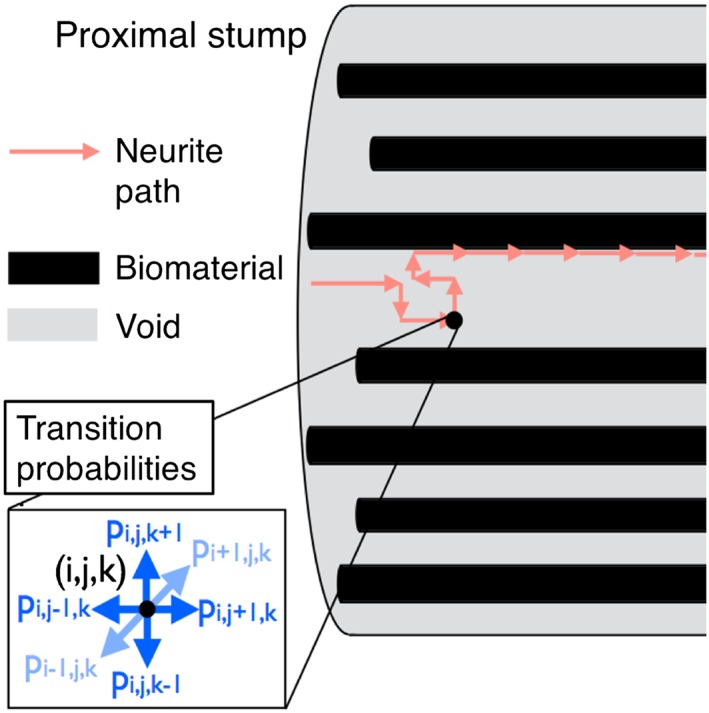Figure 3.

Schematic of the modelling set‐up. Axonal growth is initiated at the proximal stump, and the path of neurite growth is determined by a probabilistic model. Both the temporal and 3D spatial domain are discretized, and at each time step neurites sprout from the sites located at the proximal end of the construct with a prescribed probability. Once a sprout has formed at any one of these sites, it proceeds to grow according to a Markovian random walk, with transition probabilities as depicted in the figure. These transition probabilities may capture directional biases, reflective of neurite response to underlying mechanical and biochemical cues, and can vary in space and time. Further, the transition probabilities mimic neurite interaction with material boundaries between the internal construct fluid space and specified regions of biomaterial placed within the construct, for example through no penetration conditions. The time interval for movement between two neighbouring grid points is set as a constant (1 mm/day), and this gives rise to an average neurite growth rate that varies both spatially and temporally. The transition probabilities reflect the propensity of growing neurites to follow the directional cues provided by the biomaterial content of the NRC, and indeed provide the opportunity to refine the level of physical cue (controlled, for example, through material density) required to support regeneration within a defined time frame
